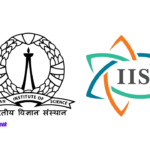The top 10 Synopsis VLSI interview questions and answers that potential hiring managers ask you during an interview to determine if you’re the right fit for the role.
Question 1. Point out the two main types of procedural blocks in Verilog?
Answer. There are two primary types of procedural blocks available in Verilog which are:
Initial – Initial blocks are those procedural blocks that run only once at time zero.
Always – This procedural block loop tends to execute itself over and over again and as the name suggests, always gets executed.
Question 2. Describe how Verilog is different as compared to another normal programming language?
Answer. In comparison to a normal programming language, Verilog is different in the following aspects:
- Multiple threads.
- Basic circuit concepts such as primitive gates as well as network connections.
- Simulation time concept.
Question 3. Point the three regions of operation of MOSFET and how they are used?
Answer. MOSFET or metal oxide semiconductor field-effect transistor is a transistor that is used for either amplifying or switching electronic signals. Accordingly, it has three areas of operations:
- Triode region
- Cut-off region
- Saturation region
While the triode and cut-off region are used to function as a switch, the saturation region, on the other hand, is used to operate as an amplifier.
Question 4. What are the different types of skews used in VLSI?
Answer. There are three different types of skew which are primarily used in VLSI. A skew is used in the clock in order to reduce the delay or in a bid to better understand the process. Accordingly, the three different types of skew are as under:
Local skew: Local skew usually includes the difference between the launching flip-flop and the destination flip-flop. This differentiation helps define a time path between the two.
Global skew: Global skew defines the difference between the earliest component reaching the flip flow vis-à-vis the latest component arriving at the flip flow within the same clock domain. It needs to be mentioned that in this skew, the delays are not measured while the clock is uniform for both.
Useful skew: Useful skew is used to define the delay in capturing flip flop paths which, in turn, help in setting up an environment with precise requirements for the launch and capture of the timing path. It needs to be mentioned that for design purposes, the hold requirement has to be met.
Question 5. How many transistors does a Static RAM use?
Answer. Static RAM makes use of six transistors. It also needs to be said that, under Static RAM, read and write operations make use of the same port.
Question 6. Explain what an SCR is?
Answer. SCR or Silicon Controlled Rectifier can be described as a 4 layered, 3-terminal solid-state device that is used to control the flow of current. It can be termed as a type of rectifier which is controlled by a logical gate signal.
Question 7. Explain what DCMs are and why they are used?
Answer. DCM or Digital Clock Manager can be described as a fully digital control system which makes use of feedback in order to maintain clock signal characteristics with a high degree of precision. DCM manages to do this despite the occurrence of normal variations in operating temperature and voltage.
Question 8. Explain the usage of defpararm?
Answer. With the keyword defparam, parameter values can be modified at any module instance in the design. In addition, Defparam overrides the parameter value at compile time.
Question 9. What is difference between latch and flipflop?
Answer. The main difference between latch and FF is that latches are level sensitive while FF is edge sensitive. They both require the use of a clock signal and are used in sequential logic. For a latch, the output tracks the input when the clock signal is high, so as long as the clock is logic 1, the output can change if the input also changes. FF on the other hand, will store the input only when there is a rising/falling edge of the clock.
Question 10. Explain what is Slack?
Answer. Slack is referred to as a time delay difference from the expected delay to the actual delay in a particular path. Slack can be negative or positive.
These are the top 10 Synopsis VLSI interview questions and answers which were asked in an interview, go through each and every concept before going for the interview.
All the best for your interview and do share your interview experience or question with us at contact@electronics-geek.com and help the job seekers
Apply for NVIDIA RECRUITMENT 2021






